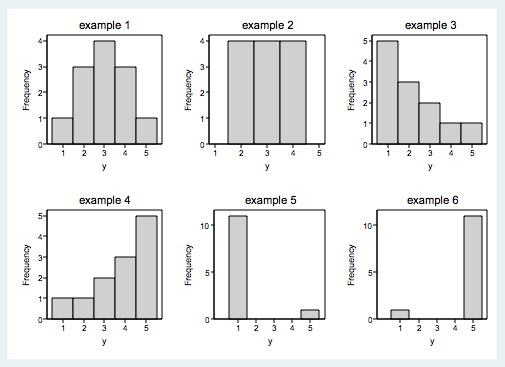
skewness = m3
---------
sqrt(m2)3
where m2 = Σ(X - mean)2/N is the second moment, and
m3 = Σ(X - mean)3/N is the third moment.
The formula uses the second and third moments about the mean. Moments involve
powers of deviations, for example the second moment uses the sum of squared deviations and
the third moment uses the sum of the cubed of deviations.
The second moment about the mean, m2, is really a version of the variance related to the unbiased estimate of the variance that uses N-1 in the denominator. The square root (sqrt) of m2 is therefore related to the standard deviation. Thus, the index of skewness is based on ratio of the third moment about the mean divided by the standard deviation cubed. Normal distributions which are perfectly symmetric have a skewness index of zero.

ex 1: skewness = 0.00 ex 2: skewness = 0.00 ex 3: skewness = 0.88 ex 4: skewness = -0.88 ex 5: skewness = 3.02 ex 6: skewness = -3.02The following examples are from various shaped distributions to give you and idea of how skewness can vary. Example 7 is as close to a perfectly symmetric normal distribution as we can get.
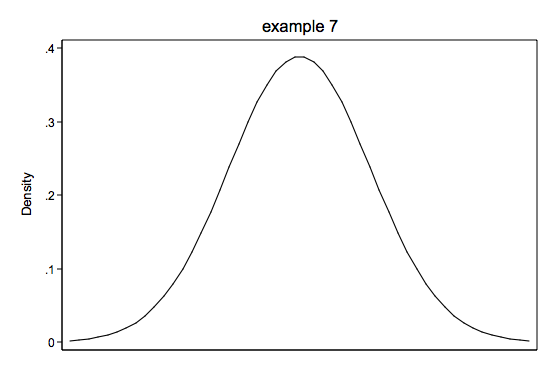
ex 7: skewness = 0.0000001
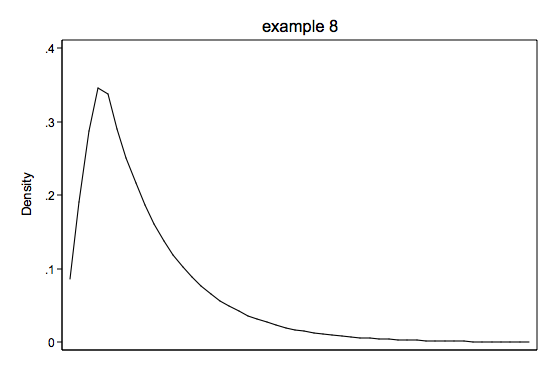
ex 8: skewness = 1.85
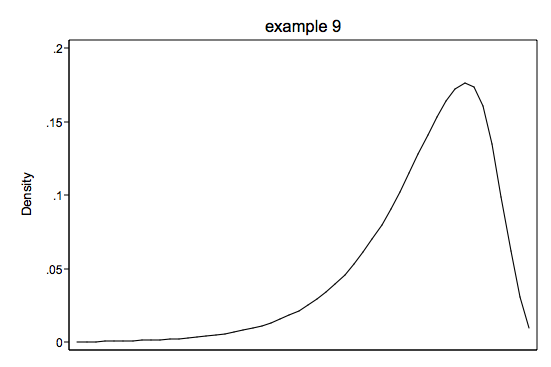
ex 9: skewness = -1.32
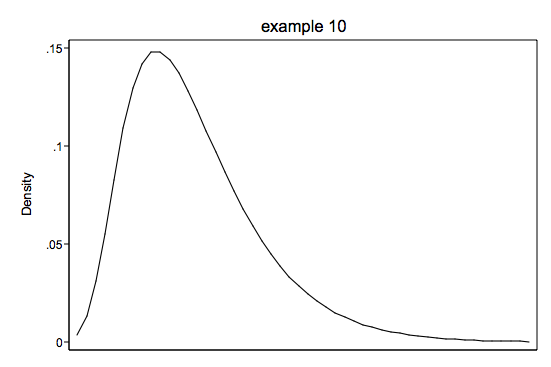
ex 10: skewness = 1.18
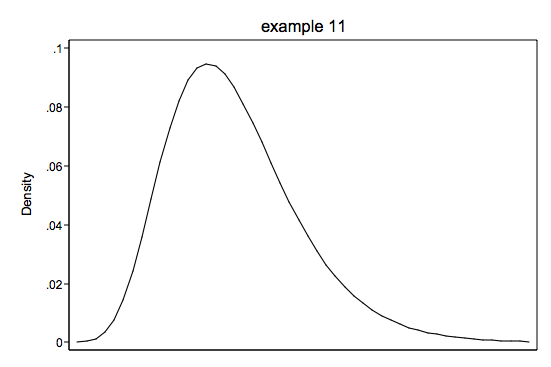
ex 11: skewness = 0.83
Intro Home Page
Phil Ender, 2aug06